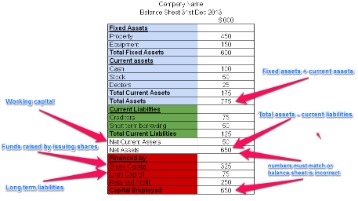
Bug fixes are self-explanatory, and your Scrum team should address these quickly to uphold the integrity of the product. Some bugs may be important enough to interrupt your team’s current sprint, while others can wait for the next sprint. An overall rule with bugs, however, is to keep them at the top of your product backlog so your team doesn’t forget about them.
Once a task is on the backlog, it needs an owner who can execute the work of the sprint backlog to complete the task. Prioritization becomes crucial when managing changes to the backlog. The business analyst must evaluate each change request based on its impact and urgency. They can prioritize which items should be added or modified in the backlog by considering customer needs, market trends, and project constraints. Communication plays a vital role in managing changes to the backlog.
Marketing

The product backlog is the single authoritative source for things that a team works on. That means that nothing gets done that isn’t on the product backlog. Conversely, the presence of a product backlog item on a product backlog does not guarantee that it will be delivered. It represents an option the team has for delivering a specific outcome rather than a commitment. Sprint backlogs and product backlogs are very similar in terms of their components. Sprint backlogs are a subset of the product backlog, but they’re used specifically during sprints.
Aligns the team with the product vision
A view into the backlog can also provide a preview of what’s to come. It allows technical teams to begin thinking about how they might implement those items. Moreover, they can mitigate any conflicts, dependencies, or advanced work required. With a well-maintained backlog, the contents of any sprint will rarely be the first time the team has how to process an invoice encountered the item and its requirements. The product owner then organizes each of the user stories into a single list for the development team.
Backlogs may also apply to companies that develop products/services on a subscription basis, such as SaaS (software-as-a-service) providers. The presence of a backlog can have positive or negative implications. For example, a rising time value of money dictionary definition backlog of product orders might indicate rising sales. On the other hand, companies generally want to avoid having a backlog as it could suggest increasing inefficiency in the production process.
The product owner is free to re-prioritize work in the backlog at any time due to customer feedback, refining estimates, and new requirements. Once work is in progress, though, keep changes to a minimum as they disrupt the development team and affect focus, flow, and morale. The sprint backlog helps you continually monitor your team’s progress. You can reconcile the estimated time and the actual time to complete each task, keeping your team on task and helping you decide if any adjustments are necessary. However, your frequency of use will depend on the length of your sprints, and even that can vary from team to team in your company. But if you’re working in an Agile methodology, the best practice is to utilize one for every sprint you plan.
- That means that nothing gets done that isn’t on the product backlog.
- Grooming sessions are an excellent opportunity to bring the entire cross-functional team together to ensure everyone is working toward a standard set of strategic goals.
- Suddenly, it is receiving 2,000 orders per day, but its production capacity remains at 1,000 shirts per day.
ClickUp: all-in-one productivity platform
It tracks what’s been done, what’s in progress, and what’s coming next, offering a clear roadmap for development. This visibility helps the team stay motivated and aligned with long-term goals. Lean is more about eliminating waste and optimizing the entire value stream, rather than focusing on specific product backlog management practices. Lean teams may use a backlog to track work items, but the focus is on optimizing the flow of value through the system.
If it’s too large, it’s broken into smaller tasks and executed across multiple sprints. Once the product backlog is built, it’s important to regularly maintain it to keep pace with the program. Product owners should review the backlog before each iteration planning meeting to ensure prioritization is correct and feedback from the last iteration has been incorporated. Regular review of the backlog is often called “backlog grooming” in agile circles (some use the term backlog refinement).
The product owner, Scrum master, and development team will determine features the product should include from the user stories and prioritize them based on importance. Communication between team members is a crucial part of product backlog prioritization. To successfully sort through the backlog and complete items in a reasonable time frame, you and your team must work together and follow the Scrum guide. Product teams that use the agile development framework divide their work into sprints. These are short development time blocks, usually, a couple of weeks or a month, during which the team works on a limited set of tasks.
Apple was forced to delay shipments to late November and then again to December for customers pre-ordering the phone upon launch. Many criticized the backlog as an example of operating expenses: the complete guide for businesses poor sales forecasting by Apple, which saw a similar situation happen when the firm debuted its Apple Watch product in 2015. The term “backlog” has a number of uses in accounting and finance. It may, for example, refer to a company’s sales orders waiting to be filled or a stack of financial paperwork, such as loan applications, that needs to be processed.